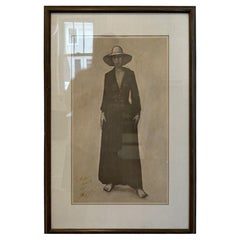Arthur Coppedge
Mid-20th Century American American Classical Prints
Paper
People Also Browsed
1990s Figurative Prints
Screen
20th Century Moroccan Moorish Planters, Cachepots and Jardinières
Brass
Mid-20th Century Mid-Century Modern Lounge Chairs
Upholstery, Wicker
1990s Contemporary Figurative Prints
Lithograph
1980s Performance Figurative Prints
Lithograph
1980s Abstract Abstract Paintings
Paper, Ink
1970s Contemporary Portrait Prints
Lithograph
1990s Performance Figurative Prints
Lithograph
1960s Pop Art Black and White Photography
Silver Gelatin
1970s Paintings
Canvas, Oil
20th Century American Modern Figurative Paintings
Oil
Early 20th Century English Trunks and Luggage
Leather
1980s Abstract Figurative Paintings
Canvas, Oil
2010s Abstract Abstract Sculptures
Found Objects, Mixed Media, Acrylic, Glass, Wood
1950s Modern Figurative Drawings and Watercolors
Ink, Board
1980s American Modern Figurative Paintings
Fabric, Burlap, Wood, Oil
Finding the Right Prints for You
Prints are works of art produced in multiple editions. Though several copies of a specific artwork can exist, collectors consider antique and vintage prints originals when they have been manually created by the artist or are “impressions” that are part of the artist’s intent for the work.
Modern artists use a range of printmaking techniques to produce different types of prints such as relief, intaglio and planographic. Relief prints are created by cutting away a printing surface to leave only a design. Ink or paint is applied to the raised parts of the surface, and it is used to stamp or press the design onto paper or another surface. Relief prints include woodcuts, linocuts and engravings.
Intaglio prints are the opposite of relief prints in that they are incised into the printing surface. The artist cuts the design into a block, plate or other material and then coats it with ink before wiping off the surface and transferring the design to paper through tremendous pressure. Intaglio prints have plate marks showing the impression of the original block or plate as it was pressed onto the paper.
Artists create planographic prints by drawing a design on a stone or metal plate using a grease crayon. The plate is washed with water, then ink is spread over the plate and it adheres to the grease markings. The image is then stamped on paper to make prints.
All of these printmaking methods have an intricate process, although each can usually transfer only one color of ink. Artists use separate plates or blocks for multiple colors, and together these create one finished work of art.
Find prints ranging from the 18th- and 19th-century bird illustrations by J.C. Sepp to mid-century modern prints, as well as numerous other antique and vintage prints at 1stDibs. Browse the collection today and read about how to arrange wall art in your space.
